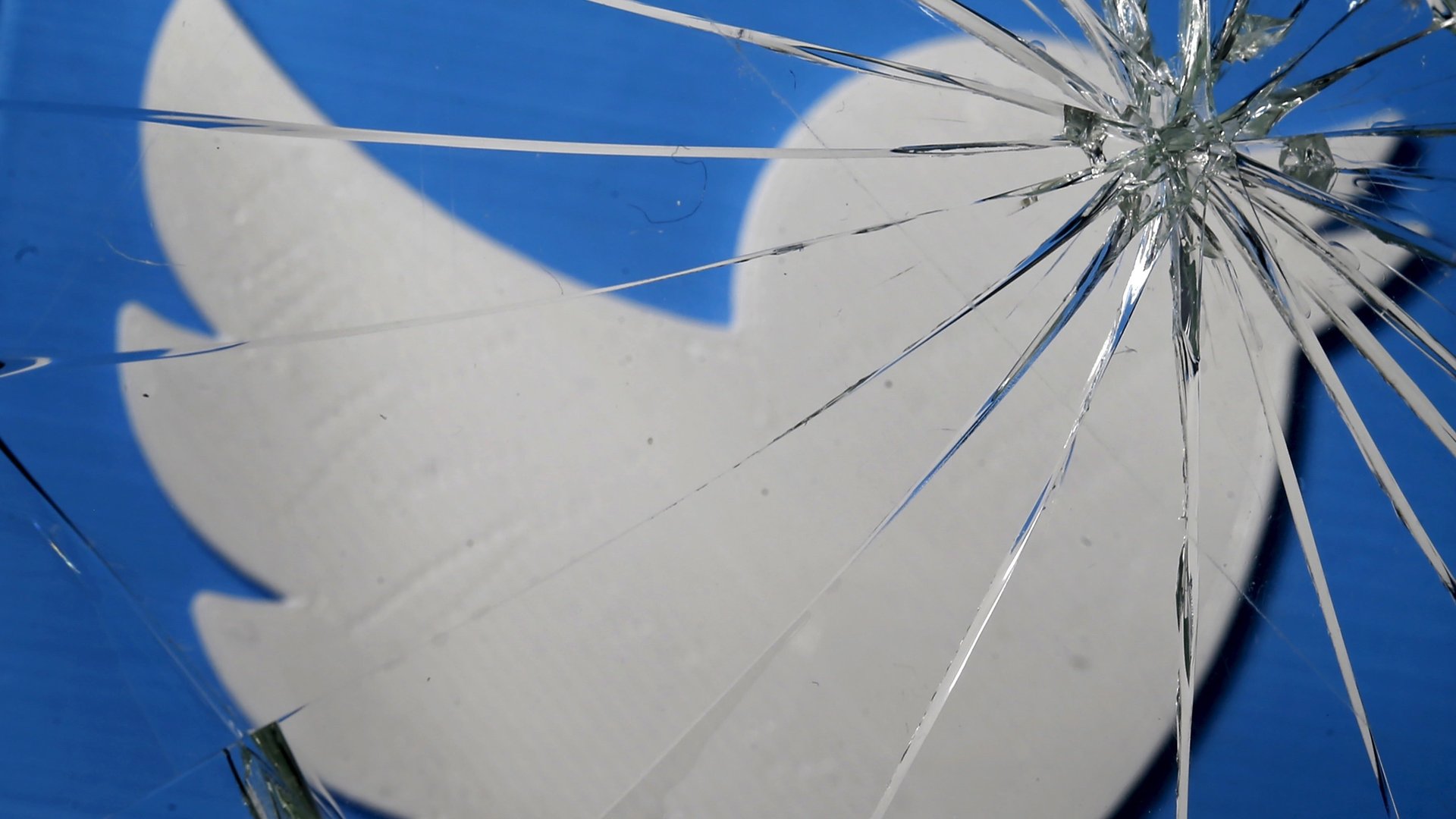Twitter has yet another band-aid solution to combat trolls
Everyone in the Twitterverse can now access a “quality” filter that will let them control tweets that appear on their feeds.


Everyone in the Twitterverse can now access a “quality” filter that will let them control tweets that appear on their feeds.
As of Thursday (Aug. 18), all Twitter users can use the filter to weed out ”lower-quality content, like duplicate tweets or content that appears to be automated, “the company announced in a blog post. Previously, the feature was available exclusively to the site’s power users. When turned on, it sifts out activity from accounts based on “origin and behavior.”
Users can now also ”limit notifications to only people they follow.” The ability to limit what you see brings Twitter a little closer to Facebook, where users can block themselves off from being discovered, hide unsavory content from their feeds, limit who has access to their posts, and store unsolicited direct messages in the ”Other” inbox.
Judging by the wording, these changes might help limit the impact of chatbots, but that might be all it does. The proposed fixes don’t address threats from people you follow or accounts you’ve recently interacted with. Perhaps more importantly, the new feature doesn’t really do anything to get harassment (and its sources) off the platform, because it doesn’t actually flag hateful tweets—it just hides them from you.
Developer Brianna Wu, a target of the months-long #Gamergate controvery on Twitter, called the change “a big blow to some of the worst harassment tactics,” but added that “Twitter is completely ineffective at punishing accounts that out LGBT people” and that wasn’t going to change.
Other forms of hate speech common on Twitter, like the anti-semitic echoes and Islamophobic tweets, are often spewed by real human accounts—and, therefore, are likely unaffected by the change.
Twitter did not specifically tout the new tools as anti-harassment measures, and the company did not respond to questions from Quartz about whether or not and how the changes would improve user safety.
Meanwhile, critics say that Twitter has once again neglected to deal directly with the growing harassment problem on its platform. Twenty-first century trolls love Twitter for its openness and accessibility. Being able to target anybody, no matter how famous, is a noxious perk of the platform. And Twitter has no verifications put in place to link people back to any real-world identity, making it a hotbed for anonymized hate.
Two years ago, during a Twitter Q&A before an earnings call, then-CEO Dick Costolo was bombarded with tweets questioning the company’s lack of action regarding abusive tweets. Many users called the company out for not having a robust reporting structure and for its weak handling of complaints, alleging that hateful accounts sprung back up as soon as they were deleted. The latest changes to the Twitter platform let you block those accounts, but that doesn’t solve the underlying problem.
Twitter has improved in some areas in recent months. For example, it has actively cracked down on profiles that appear to support acts of terrorism. The site deleted 125,000 ISIS-related accounts by February 2016, and suspended another 235,000 extremist profiles in the following six months. However, the company doesn’t seem ready to attack day-to-day trolling on a smaller scale, which may not pose a national threat but can still affect individuals and groups of people deeply.